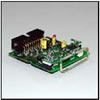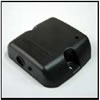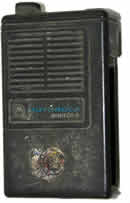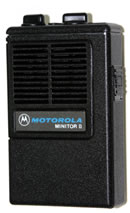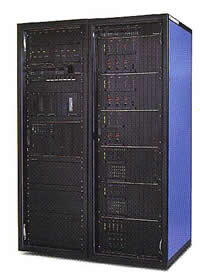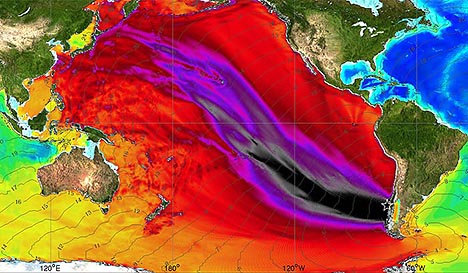BloostonLaw Telecom Update Published by the Law Offices of Blooston, Mordkofsky, Dickens, Duffy & Prendergast, LLP [Portions reproduced here with the firm's permission.] www.bloostonlaw.com |
| Vol.
13, No. 9 |
x March
3, 2010 |
 FCC Proposes $25K Fines For Failure To File CPNI Certifications The FCC has issued two separate Omnibus Notices of Apparent Liability for Forfeiture, proposing to fine each of 13 companies $25,000 for failing to file their required annual customer proprietary network information (CPNI) certifications for calendar year 2008. The Commission noted that the forfeiture amount was $20,000 per company for failing to file for calendar year 2007. But the Commission said an upward adjustment to $25,000 is warranted for the 13 companies at issue because of their “repeated failure to comply, even after the companies were explicitly warned of the potential consequences via citations and admonishments.” BloostonLaw recently noted that the FCC issued a CPNI enforcement advisory, reminding telecommunications carriers and interconnected VoIP providers that they must file annual reports certifying their compliance with the Commission’s CPNI rules by March 1 (BloostonLaw Telecom Update, January 20). And we remind our clients that failure to comply with the CPNI rules, including the annual certification requirement, may subject them to enforcement action, including monetary forfeitures of up to $150,000 for each violation or each day of a continuing violation, up to a maximum of $1,500,000. If you missed the March 1, 2010, deadline for the annual certification, we recommend that you contact us IMMEDIATELY. BloostonLaw contacts: Gerry Duffy (202-828-5528), and Mary Sisak (202-5554) |
 INSIDE THIS ISSUE - FCC Chairman wants to free up 500 MHz of spectrum for wireless, spend up to $18 billion on public safety operations.
- Proposals for Tribal lands.
- FCC releases latest report on telephone number utilization.
- Ad Hoc Coalition seeks to suspend enforcement of USF reporting rules.
|
FCC Chairman Wants To Free Up To 500 MHz Of Spectrum For Wireless, Spend Up To $18 Billion On Public Safety Operations FCC Changes Course on D Block Auction FCC Chairman Julius Genachowski last week took to the speech circuit to unveil aspects of the forthcoming National Broadband Plan, including freeing up to 500 megahertz of spectrum for wireless and spending up to $18 billion on public safety. The Commission plans to present the Plan at its March 16 open meeting before delivering it to Congress the next day. The FCC also appears to be changing course on how the private sector will work with public safety: The 700 MHz D Block may now be sold at auction without the requirement that it be constructed as part of a nationwide public safety network, thereby creating a potential auction opportunity for our clients. However, the FCC will instead apparently expect all 700 MHz licensees to grant public safety traffic priority access to their networks. Our clients will want to participate in upcoming rulemakings (and legislative efforts) that will decide the details of the new regime, to ensure that (1) any D Block auction features BTA-sized licenses so that small carriers can bid successfully; and (2) any requirements that 700 MHz licensees give priority access to public safety traffic be fair to smaller carriers. In a speech to the New America Foundation on February 24, Genachowski said the National Broadband Plan will set a goal of freeing up 500 megahertz of spectrum over the next decade, and that the FCC will work closely with the National Telecommunications and Information Administration (NTIA) to do so. To help achieve this, the Plan will propose a “Mobile Future Auction” — an auction permitting existing spectrum licensees, such as television broadcasters in spectrum-starved markets, to voluntarily relinquish spectrum in exchange for a share of auction proceeds, and allow spectrum sharing and other spectrum efficiency measures. The Chairman emphasized that this would be a voluntary program. He said that the Mobile Future Auction would allow broadcasters to elect to participate in a mechanism that could save costs for broadcasters while also being a major part of the solution to one of our country’s most significant challenges. “Why look at broadcast spectrum as a major part of our spectrum strategic planning?” he asked. “First, a broad range of analysts, companies and trade associations participating in our Broadband proceeding agree that a clear candidate for allocation is spectrum in the broadcast TV bands. “They point to a massive amount of unlocked value in that spectrum, which has characteristics that make it particularly suitable for mobile broadband – one study suggests that as much as $50 billion in value could be unlocked if we adopted policies to convert some of the broadcast spectrum to mobile broadband. This suggests that there are inefficiencies in the current allocation. “A second reason is that the highly valuable spectrum currently allocated for broadcast television is not being used efficiently – indeed, much is not being used at all. “About 300 megahertz of spectrum have been set aside for broadcast TV. In markets with less than 1 million people, only 36 megahertz are typically used for broadcasting. In cities with more than 1 million people, on average about 100 megahertz are used. Even in our very largest cities, at most only about 150 megahertz out of 300 megahertz are used. “This is true even after the recent reallocation for digital television, which freed up some spectrum for mobile broadband. New technologies allow – indeed, they require – new strategic planning to ensure the most efficient use of spectrum, a vital public resource, especially given our broadband needs. “Because of the billions of dollars of unlocked value in broadcast spectrum, and because of the current inefficient spectrum allocation, the Mobile Future Auction is a win-win proposal: for broadcasters, who win more flexibility to pursue business models to serve their local communities; and for the public, which wins more innovation in mobile broadband services, continued free, over-the-air television, and the benefits of the proceeds of new and substantial auction revenues.” The Chairman said the National Broadband Plan also proposes resolving longstanding debates about how to maximize the value of spectrum in bands such as the Mobile Satellite Service (MSS) or Wireless Communications Service (WCS) by giving licensees the option of new flexibility to put the spectrum toward mobile broadband use—or the option of voluntarily transferring the license to someone else who will. In addition, he said the Plan will encourage innovative ways of using spectrum, including what some call “opportunistic” uses, to encourage the development of new technologies and new spectrum policy models. “Unlicensed spectrum, for example, has been a proven testbed for emerging competition, injecting new investment and innovation into the marketplace, and spawning new services and devices from Bluetooth to Wi-Fi technology, he said. The market for Wi-Fi network equipment alone is about $4 billion a year, and analysts project the market for Wi-Fi-enabled health products will reach $5 billion by 2014. This is what people used to call the “junk band” until the FCC released it for unlicensed use and innovators got to work,” the Chairman said. (xG Technology Inc. is an example of a company making innovative use of the unlicensed 900 MHz band for its xMax mobile VoIP technology.) “In addition, new ideas such as databases that dynamically enable—or revoke—access to spectrum in particular times and places promise to change the way we think about spectrum,” Genachowski said. “For example, entrepreneurs could create new types of devices and ad hoc networks, enabling innovative new uses of spectrum. “And, spurred by the smart persistence of my colleague Commissioner Michael Copps, the Plan will include a recommendation that we invest a sufficient amount in R&D to ensure that the science underpinning spectrum use continues to advance. “To close the adoption gap, our Plan would propose the creation of a Mobility Fund, as part of broader reforms of the Universal Service Fund. Without increasing the overall size of universal service funding, the Plan will seek to provide one-time support for deployment of infrastructure enabling robust mobile broadband networks, to bring all states to a minimum level of mobile availability. Bringing all states up to a national standard will help enable Americans in unserved areas participate in the mobile revolution. “Finally, and critically, to improve mobile communications for our first responders, we will develop the 700 MHz public safety broadband network to achieve long overdue interoperability,” the Chairman said. Public Safety In a Public Safety Briefing the next day, February 25, Genachowski said the public safety portion of the National Broadband Plan will address three general areas. It will: - Recommend concrete steps for the deployment of a nationwide interoperable wireless broadband network for public safety.
- Focus on increasing cybersecurity and critical infrastructure survivability of broadband networks.
- Propose measures to advance Next Generation 9-1-1 services and new public alerting initiatives that leverage broadband technology.
The Chairman said he had asked Admiral James Barnett, Chief of the Public Safety and Homeland Security Bureau to lead the effort of taking a fresh and critical look at all options to achieve the goal of deploying a nationwide interoperable public safety broadband wireless network as soon as possible, including the role that the D Block should have with respect to public safety. The Chairman said that the Plan that the Barnett team has developed is the best and shortest path to a nationwide interoperable broadband network for public safety. The Plan: - Ensures that broadband wireless communications for public safety will be fully interoperable across all geographies and jurisdictions.
- Ensures nationwide coverage.
- Provides for funding for the construction, operation and evolution of the public safety network.
- Provides for reserve capacity and needed redundancy and reliability through roaming and priority access on commercial broadband networks.
- Ensures that public safety will have available to it cutting-edge technology, including handsets, at consumer electronic prices.
“How does the Plan do it?” Genachowski asked. “First, one of the essential recommendations in the public safety portion of the Plan is for the creation of an Emergency Response Interoperability Center (ERIC) at the FCC to establish a technical framework that will guarantee nationwide interoperability from the start. “Second, to ensure that we have nationwide coverage and the public safety network is redundant and resilient, there is a need for a significant funding commitment both initially and over time. “The Plan will recommend that Congress consider significant public funding — $16-18 Billion over 10 years — for the creation of a federal grant program to help support network construction, operation and evolution of the pubic safety broadband network. “This is important. We have gone too long with little progress to show for it. The private sector simply is not going to build a nationwide, state-of-the-art, interoperable broadband network for public safety on its own dime. “Local municipalities and states can certainly contribute some amount to sustaining any network that is built. But the bottom line is that if we want to deliver on what our first responders need to protect our communities and loved ones, public money will need to be put toward tackling this national priority,” Genachowski said. “It is in this context that the Broadband team is recommending that we move forward with a D Block auction, the Chairman said. “And in order to ensure sufficient reserve capacity for the network, as well as redundancy and resiliency, the Plan envisions that public safety will be able to access not just the D Block spectrum, but the entire 700 MHz band through roaming and priority access arrangements. Rather than solely focusing on just the D-Block, through the Plan, public safety isn’t limited to 10 or even 20 megahertz of spectrum, but could have access to as much as 80 megahertz under these arrangements. “Fourth, we must ensure that the public safety community has access to a competitive environment to ensure the deployment of their network. To that end, our approach does not limit the public safety community to one potential partner. Instead, public safety can select any commercial operator it determines is appropriate or, if it prefers, a systems integrator to partner with. “Finally, we recognize that in the long run, we will need to identify additional spectrum for broadband as demand increases. The Broadband Plan therefore proposes a medium and long-term strategy to obtain additional spectrum resources for broadband use,” the Chairman said. Admiral Barnett: In his remarks at the briefing, Admiral Barnett said that public safety will retain its full spectrum allocation in the 700 MHz band, including the 10 MHz that has been licensed to public safety for broadband use. Nothing in the proposed National Broadband Plan changes this essential fact. “Like any Commission licensee, public safety must abide by FCC rules and technical requirements, but the key point is that this will continue to be public safety’s spectrum for their use,” Barnett said. “Second, we have devoted much thought in the Plan to how public safety can obtain access not just to the D Block, but to the entire 700 MHz band. This is why we have proposed working recommendations to enable public safety broadband users to roam on commercial networks and obtain priority access on terms that are reasonable and affordable. “Why is this important? Because if public safety has the ability to roam and obtain priority access on commercial networks, it can roam on commercial networks in areas where public safety’s own network facilities have not yet been built or are otherwise unavailable. And priority access provides a means for public safety to use additional spectrum capacity in addition to its own dedicated spectrum. “This could be critical in times of emergency, when public safety entities may want to shift non-emergency traffic to other networks in order to reserve their own network and dedicated spectrum for mission-critical communications. “In the long run, though, we recognize that public safety, like all other broadband users, will need access to more spectrum than is available today. This is because demand for high-bandwidth applications will increase, and we also expect that the public safety broadband network will eventually evolve to support mission-critical voice as well as data. “That is why we believe that the proposed working recommendations in the National Broadband Plan, devoted to reclaiming additional spectrum for broadband, are just as important for public safety as they are for commercial broadband providers or the public as a whole. “Reclaiming additional spectrum gives us the long-term option of dedicating some portion of that spectrum for public safety use. But even spectrum that is not dedicated to public safety (and we assume that most reclaimed spectrum would not be) can be accessible and beneficial to public safety,” Barnett said. BloostonLaw contacts: Hal Mordkofsky, Ben Dickens, Gerry Duffy, John Prendergast, and Mary Sisak. Proposals For Tribal Lands In remarks to the National Congress of American Indians on March 2, FCC Chairman Julius Genachowski said the biggest concern facing Tribal lands is simply getting connected. He noted that the National Broadband Plan will include a “once-in-a-generation” transformation of the $8 billion Universal Service Fund (USF) — converting it over time to broadband support and freeing up more resources to build 21st century communications networks, including on Tribal lands. In addition, he said the FCC will help more Tribal libraries qualify for E-rate funding and recommend the creation of a Tribal seat on both the Federal-State Joint Board on Universal Service and the Universal Service Administrative Company (USAC) Board of Directors Even with these changes to the USF, a sizable funding gap will still exist, he said. To help close this gap, the Plan will also recommend: - Creating a separate Tribal Broadband Fund to support sustainable deployment and adoption programs in Indian Country;
- Providing funding to upgrade connectivity for federal facilities on Tribal lands, including those managed by the Bureau of Indian Affairs, the Bureau of Indian Education, and the Indian Health Service; and
- Allowing more members of the Tribal community to share connectivity funded by the E-rate and Rural Health Care programs.
To help Tribal communities acquire technical broadband skills and expertise, the Plan will recommend that the FCC expand its Indian Telecommunications Initiative. The Commission will also propose allowing Tribal representatives to participate in the FCC University training programs at no cost. To close the information gap about broadband access and usage in Indian County, the Plan will recommend efforts to improve data collection on Tribal lands, including making Tribes eligible for grants for future broadband mapping and planning projects, and facilitating data sharing between broadband providers and Tribes. To enhance communications and consulting with Tribal governments, the Plan proposes three new mechanisms. 1) Government-wide, the Plan will recommend the creation of a Federal-Tribal Broadband Initiative consisting of Tribal leaders and officials from across all federal agencies. This Initiative will improve coordination, streamline programs, and reduce redundancies. 2) Within the FCC, the Plan will recommend the creation of an Office of Tribal Affairs with enough staff, resources, and authority to consult regularly with Tribal leaders and coordinate within the FCC. 3) The plan also proposes a separate task force consisting of senior FCC Staff and Tribal leaders that will focus specifically on broadband deployment and adoption on Tribal lands.
In addition to wireline broadband, mobile broadband offers tremendous possibilities for Tribal communities. The FCC will explore ways of improving Tribal access to and use of spectrum, including how to improve the Tribal Land Bidding Credit program, how to help Tribes know what spectrum is available over Tribal lands, and how to create additional flexibility and incentives for building out facilities serving Tribal lands. Lastly, the Chairman said, the Commission recently adopted rules giving priority to Tribes in getting broadcast radio licenses in Tribal communities. These rules will give precedence to federally-recognized American Indian Tribes and Alaska Native Villages that want to set up new radio stations that serve communities on Tribal lands. The National Broadband Plan will recommend that the Commission look at expanding any Tribal priority policy to include the process for licensing fixed and mobile wireless licenses covering Tribal lands. BloostonLaw contacts: Ben Dickens, Gerry Duffy, and Mary Sisak. FCC RELEASES LATEST REPORT ON TELEPHONE NUMBER UTILIZATION: The FCC has released its latest report on telephone number utilization in the United States. Telephone number utilization refers to the percentage of telephone numbers assigned to customers compared to the total of telephone numbers assigned to carriers. The Numbering Resource Utilization Report details how those telephone numbers are being used. The report presents numbering resource utilization statistics based on June 2009 data that carriers submitted to the North American Numbering Plan Administrator (NANPA), as well as other information. Tracking number utilization is one of a number of initiatives taken by the Commission to ensure that limited numbering resources are used efficiently. Utilization Statistics by Carrier Type – Reporting carriers have nearly 1.4 billion telephone numbers. Of these, about 673 million were assigned to customers, about 629 million were available to be assigned, and about 87 million were used for other purposes, such as for administrative use. Following are utilization statistics by carrier type as of June 30, 2009: - Overall, 48.5% of all telephone numbers were assigned to customers.
- The overall utilization rate for Incumbent Local Exchange Carriers (LECs) was 48.8%, down from 49.6% six months earlier.
- The overall utilization rate for Cellular/PCS carriers was 66.1%, up from 65.6% six months earlier.
- The overall utilization rate for Competitive LECs was 34.3%, up from 31.1% six months earlier.
Telephone Numbers Saved through Thousands-block Pooling – Through June 30, 2009, thousands-block pooling has made it unnecessary to distribute about 449 million telephone numbers. Thousands-block pooling is available in areas with the most demand for additional numbering resources. This means that telephone numbers can now be distributed in blocks of 1,000 rather than blocks of 10,000. This enables carriers to obtain the telephone numbers they need to serve their customers while allowing unneeded blocks to be made available to other carriers. Telephone Numbers Returned – As required by the Commission’s Numbering Resource Optimization Orders, carriers are returning large quantities of telephone numbers that they do not need to the NANPA so that those numbers can be assigned to other carriers with more immediate needs. - In the second quarter of 2009, carriers returned 1.15 million telephone numbers to the NANPA.
- In the third quarter of 2009, carriers returned 0.82 million telephone numbers to the NANPA.
Most Utilized Area Codes in the United States – Michigan’s area code 947 is the most utilized, with 86.1% of numbers assigned to customers. New York’s area code 646 (which is coincident with New York City’s area code 212) is the next most utilized, with 81.2% of numbers assigned to customers. (The above statistics exclude area code 684, in which only one carrier is using numbers.) Customers Moving Millions of Telephone Numbers to New Carriers – Since wireless number portability began on November 24, 2003, wireline customers have moved over 77 million telephone numbers to new wireline carriers. During the same time, wireless customers moved more than 70 million telephone numbers to new wireless carriers. BloostonLaw contacts: Ben Dickens, Gerry Duffy, and Mary Sisak. AD HOC COALITION SEEKS TO SUSPEND ENFORCEMENT OF USF REPORTING RULES: The Ad Hoc Coalition of International Telecommunications Companies filed a petition on February 16, 2010, requesting that the FCC commence a rulemaking to address the Universal Service Administrative Company’s (USAC’s) interpretation and application of the rules and requirements for carriers’ reporting of revenues from the provision of service to other carriers (i.e., wholesale revenues) for purposes of determining universal service contribution obligations. The Coalition asks that “the Commission suspend all pending and future enforcement” of these rules and requirements as currently interpreted until new rules are adopted. Comments in this WC Docket No. 06-122 proceeding are due March 29, and replies are due April 13. BloostonLaw contacts: Ben Dickens, Gerry Duffy, and Mary Sisak. DEADLINE EXTENSIONS: The FCC has extended the comment cycle for its Second Further Notice of Proposed Rulemaking proposing to amend the Commission’s Part 11 rules governing the Emergency Alert System (EAS) to provide for national testing of the EAS and collection of data from such tests. Comments in this EB Docket No. 04-296 proceeding are now due March 15, and replies are due April 13. Comments on the FCC’s WC Docket No. 07-52 Notice of Proposed Rulemaking (NPRM) seeking public comment on draft rules to preserve an open Internet (“net neutrality”) have been extended until April 8, 2010. | 


 When
I was a young boy, I remember hearing the old people talking about
new things. There was a lot a resistance against change. It seems really
funny now to think that many people resisted the idea of indoor plumbing.
But try to think of it in another way: "Why would anyone want
to have a toilet inside of their home?"
When
I was a young boy, I remember hearing the old people talking about
new things. There was a lot a resistance against change. It seems really
funny now to think that many people resisted the idea of indoor plumbing.
But try to think of it in another way: "Why would anyone want
to have a toilet inside of their home?"



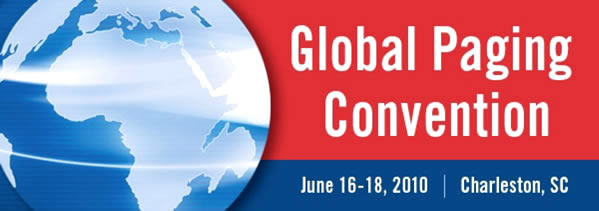



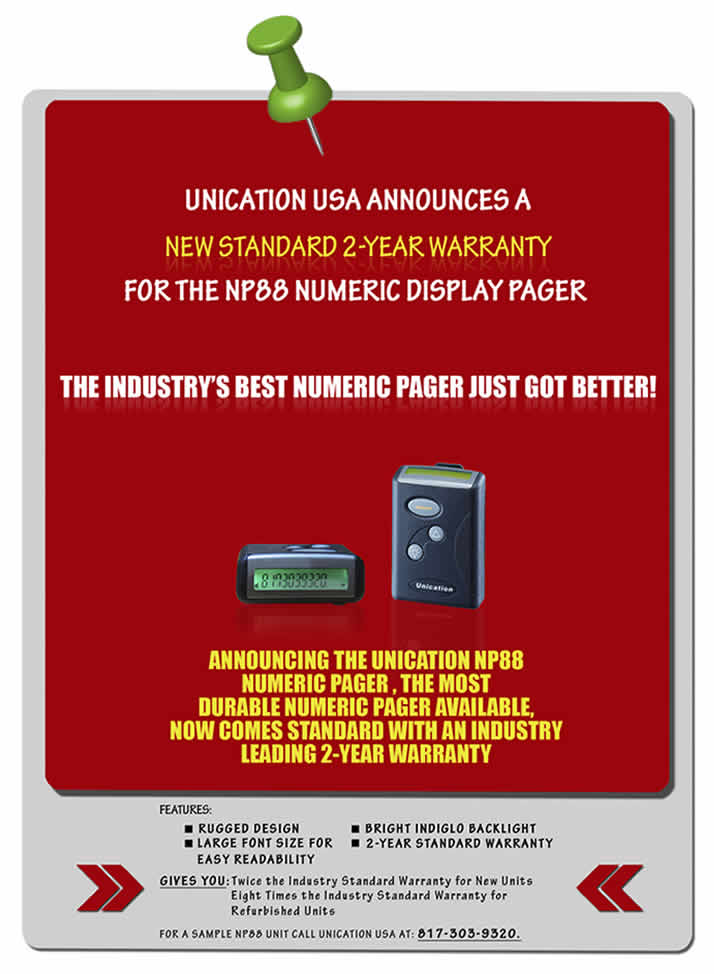


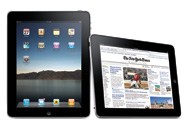 As we creep on toward the iPad launch, developers are scurrying about getting their apps ship-shape, consumers are twiddling their thumbs waiting for pre-orders to be announced, and print publishers are making preparations. Apple, of course, announced that its
As we creep on toward the iPad launch, developers are scurrying about getting their apps ship-shape, consumers are twiddling their thumbs waiting for pre-orders to be announced, and print publishers are making preparations. Apple, of course, announced that its 








